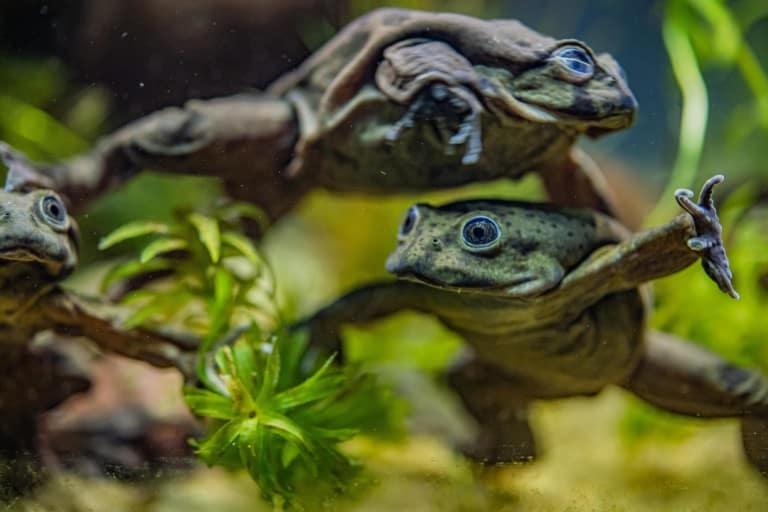‘Scrotum frogs’, endangered frogs from South America, are going on display at Chester Zoo for the first time as part of efforts to save the species from extinction.
The Lake Titicaca frog, nicknamed the ‘scrotum frog’ due to its saggy folds of skin, is the world’s largest aquatic frog. Chester Zoo is now caring for 20 Lake Titicaca frogs and studying their behaviour.
Chester Zoo is the first zoo in Europe to house ‘scrotum frogs’. It has established a European population by sending 130 frogs to 13 progressive zoos across the continent to help prevent extinction.
“To be responsible for setting up the first ever conservation breeding programme in Europe for these fascinating frogs is a real honour for us here at Chester Zoo,” said Dr Gerardo Garcia, the zoo’s curator of lower vertebrates and invertebrates.
“We’re very happy that we can now share our efforts to protect these frogs with the wider public, who will most likely be seeing them for the very first time during their visit the zoo.”
Europe’s first zoo to house ‘scrotum frogs’
Titicaca frogs are listed as endangered by the International Union for the Conservation of Nature (IUCN), with up to 80 percent thought to be lost from Lake Titicaca in the past 20 years due to pollution, habitat loss and hunting.
In response, local researchers created a rescue centre and started breeding the frogs. Some of the Titicaca water frogs were sent to Denver Zoo, before making their way to Chester Zoo.
Chester Zoo has also joined forces with the Cayetano Heredia University in Peru and Museo de Historia Natural Alcide d’Orbigny in Bolivia to save the scrotum frog from extinction.
Garcia said Chester Zoo will “build on our knowledge of the species and its biology by learning all about their life cycle, mating behaviours, favoured habitat and ability to tolerate of resist a deadly fungus”.
“Lake Titicaca frogs are highly threatened with extinction,” he added. “The planet is facing its biggest ever biodiversity extinction, with thousands of amphibian species at risk of being lost forever.”
Chester Zoo caring for 20 Lake Titicaca frogs

“This species is unique,” said Roberto Elias Piperis, coordinator of the wildlife laboratory at Cayetano Heredia University. “It is only found in Lake Titicaca and the surrounding areas where it is adapted to the very adverse conditions there.”
Chester Zoo is also creating a 10-mile Nature Recovery Corridor to restore the grasslands, wetlands, traditional orchards, hedgerows and wildflower meadows across Cheshire.
“Work has been ongoing for several years in both Bolivia and Peru to conserve the Titicaca water frog,” said Teresa Camacho Badani, chief of the herpetology department at Museo de Historia Natural Alcide d’Orbigny.
“We know that the work will not be easy, but together we want to make a real effort to conserve this critically endangered species and for this we must work as a team.”
Earlier this year, Chester Zoo unveiled an ambitious conservation masterplan, which aims to tackle the world’s climate and conservation emergencies by 2030.
Images: Chester Zoo














